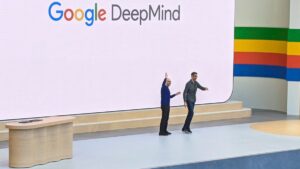Genie 2 by DeepMind Can Create Interactive Video Game-Like Worlds

DeepMind’s Genie 2: A New Frontier in 3D World Generation
DeepMind, an artificial intelligence research organization owned by Google, has introduced an innovative model known as Genie 2. This advanced system can create a seemingly infinite range of immersive 3D environments. It builds upon its predecessor, Genie, released earlier this year, and aims to transform how virtual worlds are constructed and interacted with.
Features of Genie 2
Genie 2 is designed to render interactive and real-time scenes based on a single image and a textual description. For instance, one may provide the prompt, "A cute humanoid robot in the woods," and Genie 2 will generate a corresponding 3D world. This capability aligns with developments from other companies, such as World Labs and Decart, which are also exploring similar technologies.
Genie 2 is reported to offer a broad array of rich 3D worlds where users can engage in various activities like jumping and swimming, utilizing a keyboard or mouse. Trained on a vast collection of videos, this model simulates many elements, including object interactions, animations, physics, reflections, and the behavior of non-player characters (NPCs).
Visual Quality and Realism
The visuals produced by Genie 2 are reminiscent of AAA video games, indicating that its training data may include gameplay from popular titles. However, specifics about the model’s training process remain undisclosed due to competitive sensitivities. This raises questions about intellectual property, particularly due to DeepMind’s access to YouTube and its policies that might permit video usage for training.
Genie 2 is designed to maintain consistency across different perspectives, such as first-person and isometric views, for durations that usually range between 10 to 20 seconds. Notably, it can remember and accurately render parts of a scene that are briefly out of view, a significant improvement over many existing models facing challenges with maintaining continuity.
Potential Applications
While the interactive experiences generated by Genie 2 may have limitations, such as resetting progress frequently, the model’s true potential lies in its application as a research and creative tool. It can assist artists and developers in prototyping interactive environments and evaluating AI agents. This means that concept art and sketches can be transformed into fully interactive settings, enabling researchers to create tasks that AI agents have not encountered before, encouraging more diverse training scenarios.
Industry Implications
The impact of Genie 2 on the gaming and creative industries could be significant. A recent investigation by Wired highlighted how companies like Activision Blizzard are increasingly using AI to improve efficiency and manage workforce reductions, possibly signaling a shift in how video game development is approached. As AI technologies evolve, concerns about job displacement and the creative process are becoming more pronounced.
DeepMind has dedicated substantial resources to developing world model research, indicating its ambition to be a front-runner in AI innovations. The company has recently attracted talent such as Tim Brooks, who previously led video generation projects at OpenAI, to further advance its capabilities in video technology and world simulations.
The Future of AI in Creative Spaces
With projects like Genie 2 pushing boundaries, the future of AI in creative industries looks promising yet complex. The balance between leveraging AI to enhance productivity and preserving creative jobs remains a key conversation as these technologies continue to evolve. As DeepMind and similar organizations pursue more sophisticated AI models, the landscape of interactive entertainment is likely to change dramatically.
The ongoing evolution of AI holds the potential to reshape not just game development but also how we interact with digital worlds on multiple platforms.






